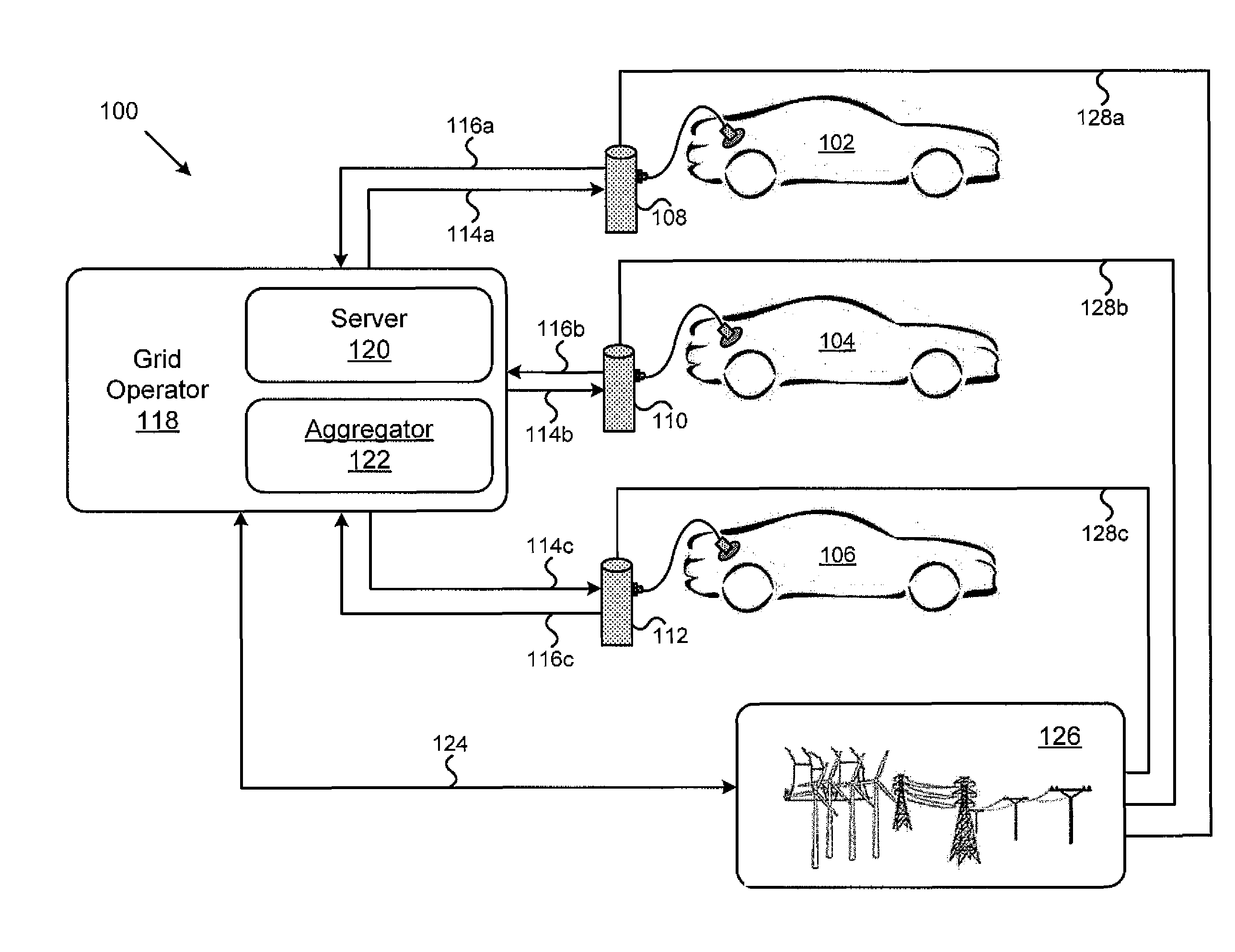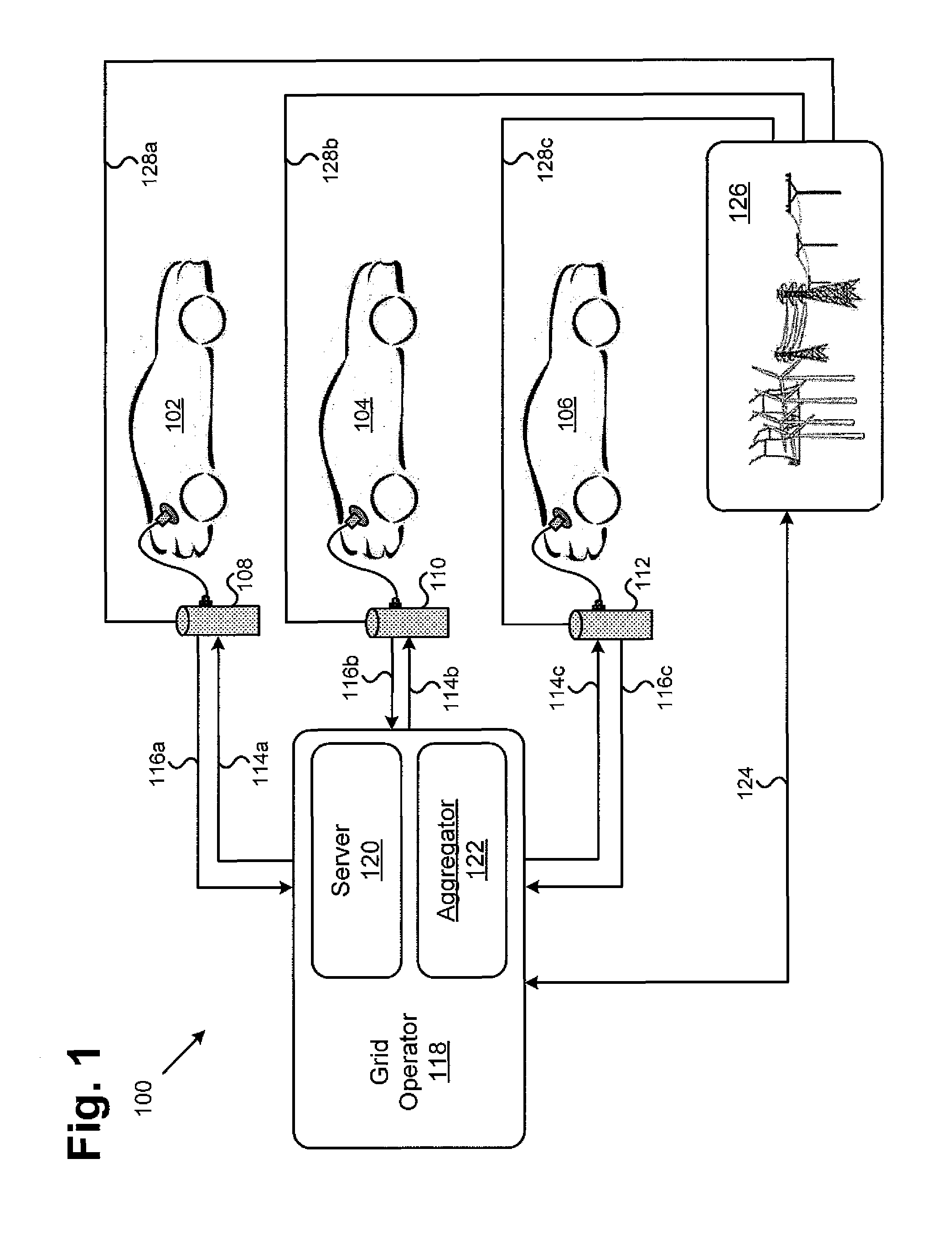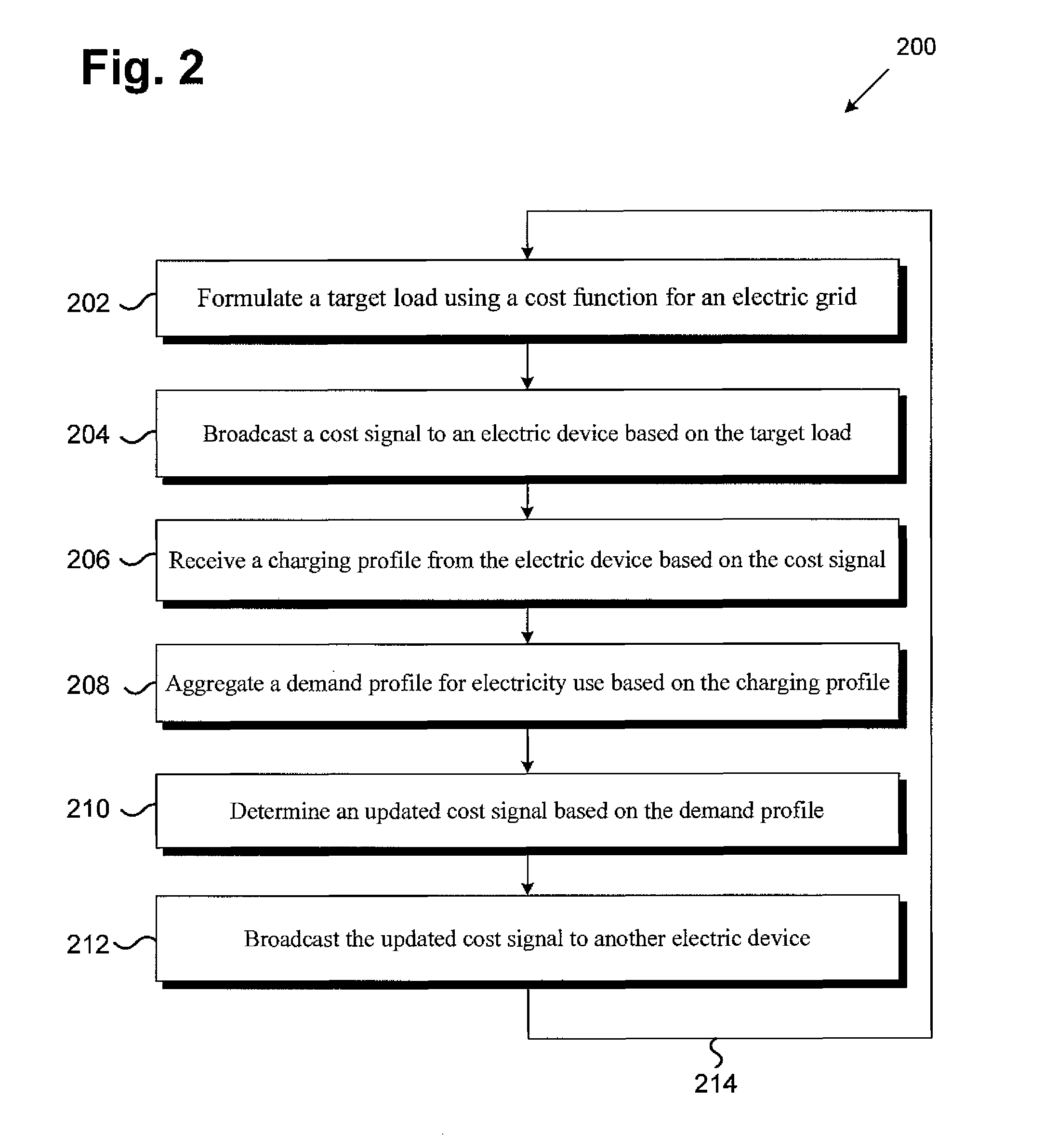System for Optimizing Electricity Use from an Electric Grid and Related Method
a technology of optimizing electricity use and electric grid, applied in the direction of charging stations, transportation and packaging, instruments, etc., can solve the problems of not being able to achieve the perfect valley filling solution from equations (1), (2), and (4), and not being able to prevent intermittent charging profiles,
- Summary
- Abstract
- Description
- Claims
- Application Information
AI Technical Summary
Benefits of technology
Problems solved by technology
Method used
Image
Examples
Embodiment Construction
[0029]The following description contains specific information pertaining to implementations in the present disclosure. The drawings in the present application and their accompanying detailed description are directed to merely exemplary implementations. Unless noted otherwise, like or corresponding elements among the figures may be indicated by like or corresponding reference numerals. Moreover, the drawings and illustrations in the present application are generally not to scale, and are not intended to correspond to actual relative dimensions.
[0030]FIG. 1 illustrates an exemplary system of optimizing electricity use from an electric grid, according to one implementation of the present application. As illustrated in FIG. 1, exemplary system 100 for optimizing electricity use from an electric grid includes electric devices 102, 104 and 106, charging stations 108, 110 and 112, grid operator 118 having server 120 and aggregator 122, electric grid 126. In the present implementation, elec...
PUM
 Login to View More
Login to View More Abstract
Description
Claims
Application Information
 Login to View More
Login to View More - R&D
- Intellectual Property
- Life Sciences
- Materials
- Tech Scout
- Unparalleled Data Quality
- Higher Quality Content
- 60% Fewer Hallucinations
Browse by: Latest US Patents, China's latest patents, Technical Efficacy Thesaurus, Application Domain, Technology Topic, Popular Technical Reports.
© 2025 PatSnap. All rights reserved.Legal|Privacy policy|Modern Slavery Act Transparency Statement|Sitemap|About US| Contact US: help@patsnap.com



